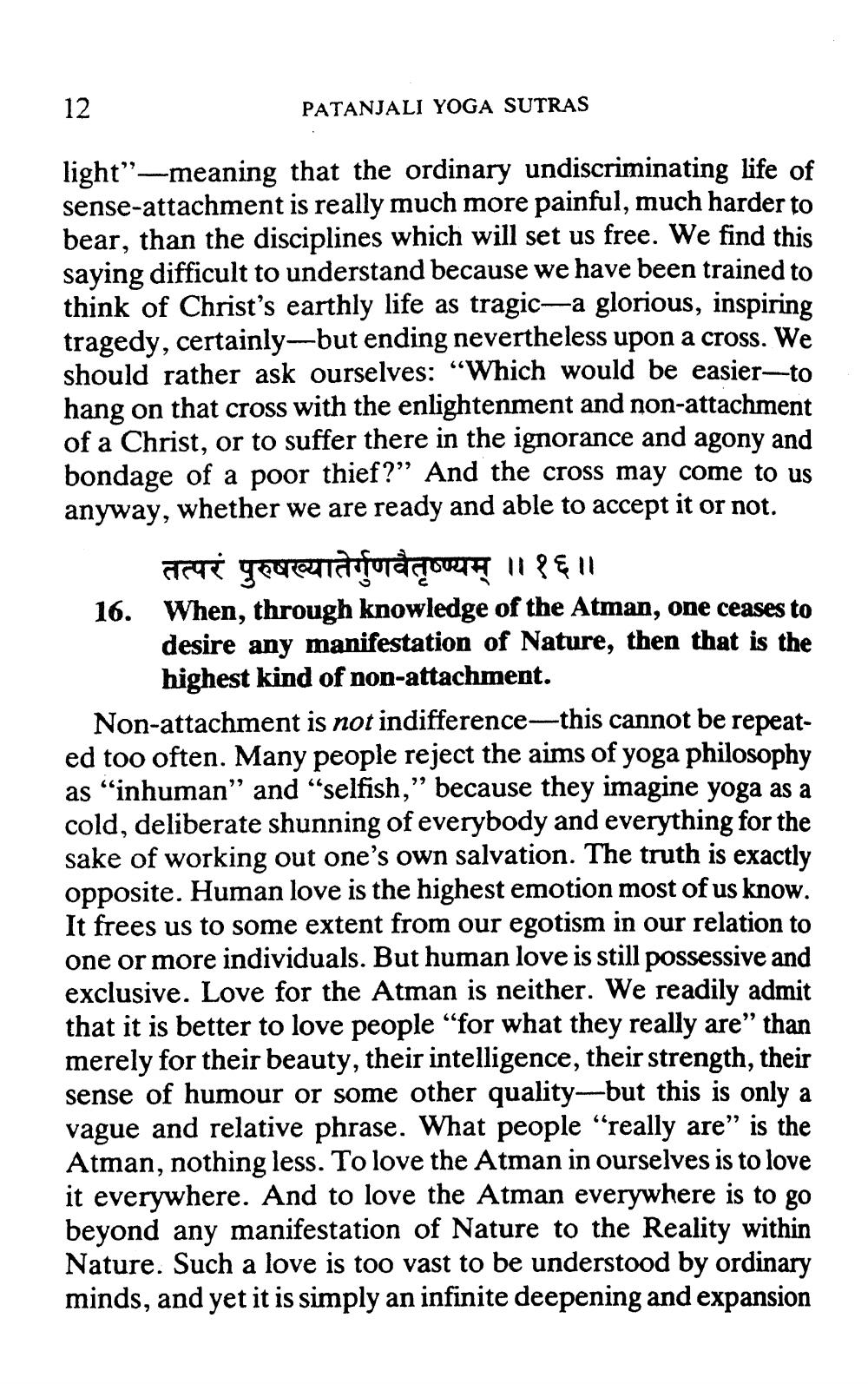________________
12
PATANJALI YOGA SUTRAS
light"-meaning that the ordinary undiscriminating life of sense-attachment is really much more painful, much harder to bear, than the disciplines which will set us free. We find this saying difficult to understand because we have been trained to think of Christ's earthly life as tragic—a glorious, inspiring tragedy, certainly-but ending nevertheless upon a cross. We should rather ask ourselves: “Which would be easier---to hang on that cross with the enlightenment and non-attachment of a Christ, or to suffer there in the ignorance and agony and bondage of a poor thief?” And the cross may come to us anyway, whether we are ready and able to accept it or not.
तत्परं पुरुषख्यातेर्गुणवैतृष्ण्यम् ॥१६॥ 16. When, through knowledge of the Atman, one ceases to
desire any manifestation of Nature, then that is the
highest kind of non-attachment. Non-attachment is not indifference this cannot be repeated too often. Many people reject the aims of yoga philosophy as “inhuman” and “selfish,” because they imagine yoga as a cold, deliberate shunning of everybody and everything for the sake of working out one's own salvation. The truth is exactly opposite. Human love is the highest emotion most of us know. It frees us to some extent from our egotism in our relation to one or more individuals. But human love is still possessive and exclusive. Love for the Atman is neither. We readily admit that it is better to love people “for what they really are” than merely for their beauty, their intelligence, their strength, their sense of humour or some other quality--but this is only a vague and relative phrase. What people really are” is the Atman, nothing less. To love the Atman in ourselves is to love it everywhere. And to love the Atman everywhere is to go beyond any manifestation of Nature to the Reality within Nature. Such a love is too vast to be understood by ordinary minds, and yet it is simply an infinite deepening and expansion




